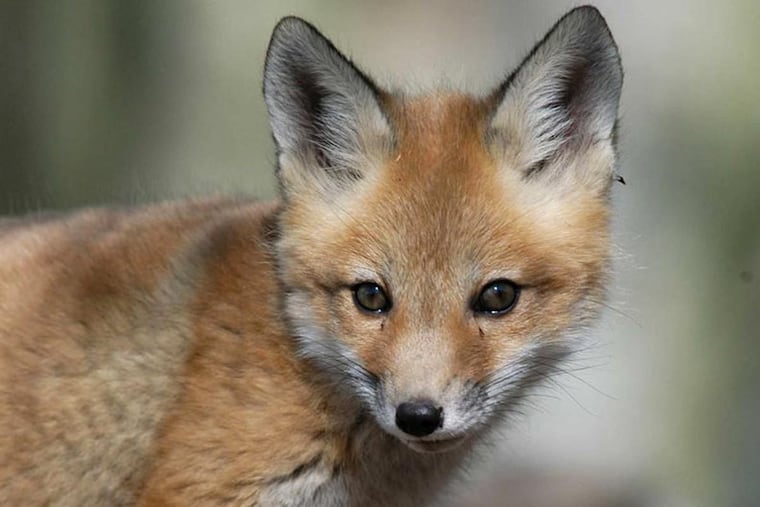Foxes are disappearing from this Shore town, and residents finally know why
The New Jersey Department of Environmental Protection has been trapping and euthanizing the foxes in Brigantine for years in an attempt to protect two endangered shorebirds: the piping plover and the red knot.

The red foxes that dart across Brigantine's North End as the sun rises often leave those lucky enough to spot one in awe.
Photographers and painters try to capture their pointed ears and bushy tails amidst a backdrop of sandy dunes. Residents stroll down the beach hoping to spot one of the harmless animals. And the city credits the foxes with controlling the Brigantine's mice and rat population.
But for years, many noticed a declining fox population – and rumors swirled that the island's "unofficial ambassadors" were being trapped and poisoned. Finally, the state offered answers.
It turns out, the New Jersey Department of Environmental Protection has been trapping and euthanizing the foxes with guns in Brigantine since the mid-1990s to protect two endangered shorebirds: the piping plover and the red knot.
"Red fox prey on these birds and their eggs. … Sometimes tough wildlife management decisions have to be made," DEP spokesman Larry Hajna said in an email.
Piping plovers, sandy-colored birds whose chicks are the size of cotton balls, dig shallow nests near sand dunes sometimes shared with red foxes and then walk to the shoreline to feed. The species can only survive in shore habitats. In 2015, state data show five pairs of plovers at the North Brigantine Natural Area, down from eight pairs decade earlier. Forty percent of the nest failures are caused by other animals preying on the birds, according to the DEP, which sets up enclosures around the nests for extra protection.
Hajna said the state traps about 10 red foxes in the North Brigantine Natural Area each year, along with some skunks and raccoons. Commercial trapping of red foxes is legal in New Jersey, and nearly 9,000 were captured from 2015 to 2016.
Relocating the foxes is not an option, Hajna said, because that would place the animals in competition with other species.
The U.S. Fish and Wildlife Service and the National Park Service also control the animal's populations at the Edwin B. Forsythe National Wildlife Refuge and Sandy Hook National Recreation Area.
At Sandy Hook last year, the National Park Service removed nine foxes from the area, four of which were sent to a rehabilitation center in Southern New Jersey. The U.S. Fish and Wildlife Service captured two foxes last year at the Holgate and Little Beach Island section of the 47,000-acre Galloway refuge.
"We support these predator management tools as a last resort," said U.S. Fish and Wildlife Service spokeswoman Meagan Racey. "Tens of thousands of foxes exist in New Jersey… compare that with plovers. There are only about 100 pairs in the state."
The trapping and killing of foxes in Brigantine is nothing new. It first began in 1997, and was met with resistance from a handful of animal rights advocates at the time, said Mayor Phil Guenther. The volunteer group wanted to begin counting the number of foxes on the North End each year, but the effort died out.
DEP officials periodically continued the practice since then and picked it up again about four years ago. But most residents and officials were in the dark about it until recently.
At a February public hearing in the city, a resident questioned snares seen set up along the dunes. A DEP representative responded with news that shocked the 400-person audience: The state was killing the foxes.
Then came anger that spread beyond the island of 9,000 people with the help of social media. Nearly 90,000 people signed a petition urging the DEP to stop trapping and killing foxes in Brigantine.
"You can tell the fox population is way down … but we had no idea they were doing this," said Brigantine Councilman Vince Sera.
Last week, the city passed a resolution expressing opposition to the DEP's euthanization program. Other than that, though, he said Brigantine "has its hands tied." A beach management agreement with the state bars island officials from passing any laws regulating predator control in the North End.
Brigantine has also been in conflict with the DEP on another issue recently, after the state's February announcement that it would limit the number of vehicle permits sold for the island's wildlife refuge on the North End.
Now, Sera said the city may create a subcommittee to try to reach compromises with the state on those issues and any others.
"We understand the DEP is trying to protect piping plover, but it is coming at eradication of another," Sera said. "Are there other solutions?"
Donna Grazioli-DeAngelis, an animal activist, started the petition a few weeks ago. The 61-year-old Brigantine resident said she began noticing fewer foxes while walking her dogs on trails in the North End around 2013. Once she learned why, Grazioli-DeAngelis took action.
"Abuse thrives in secrecy," Grazioli-DeAngelis said. "When the cat was out of the bag, people were upset."
Grazioli-DeAngelis and other supporters hope a bill to ban the manufacture and sale of certain traps will pass. It was introduced in the New Jersey Senate earlier this year and is sponsored by State Sen. Vin Gopal (D., Monmouth).
She contends foxes and humans aren't the main reason piping plovers are struggling to survive. Instead, Grazioli-DeAngelis points to an eroding coastline and more frequent hurricanes, as well as other predators.
But paw prints found around the nest enclosures suggest red foxes are the piping plover's most prevalent predator in the North End, said Dave Jenkins, chief of the Bureau of Endangered and Non-game Species.
Human disturbances have also allowed foxes to thrive on the island, he said, including a 1980s development boom along Brigantine's southern end that has inadvertently provided food and shelter to all types of predators.